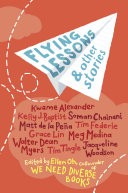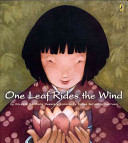
One Leaf Rides the Wind
Author: Celeste Davidson Mannis
Illustrator: Susan Kathleen Hartung
Genre: P
Award: Fall 2012 Parent‘s Choice
Resources:
Short Lesson Plan
http://www.penguin.com/static/pages/youngreaders/images/PoetryMonth_Back1.pdf
Lesson Plan
http://www.writing.umn.edu/mwp/summer/2003/2003%20images/2003%demos/roholtcdemo....
1 like8 comments



















The haiku begins with one leaf flying away past the garden‘s guard dogs and miniature bonsai trees. The main character goes through a whole day in the garden and it‘s building. She has tea and food at the treehouse. She even naps near the pond and plays with the nine koi fish. When the lanterns turn on to guide the path in the dark, she is able to reach towards the sky for the leaf. 7y
This beautifully written and illustrated haiku can be used in multiple ways in Social Studies, Math, and ELA/Reading. The poem counts from 1-10 and gives examples as it goes on. This would be a wonderful GR during Math because students learning how to count can use the story to memorize the numbers and their application. 7y
Model for the students how to do a thinking map found in the short lesson plan by Penguin.
Partner the student with a native speaker if possible and have them complete the thinking map that allows them to think about their own special place for a text to self connection. 7y
By discussing the symbolism, culture, and history in the poem, you are supplying the student with background knowledge on Japan.
This book can be used as a read aloud before discussing Japan as well.
They may be able to connect it or differentiate it to their own culture. 7y